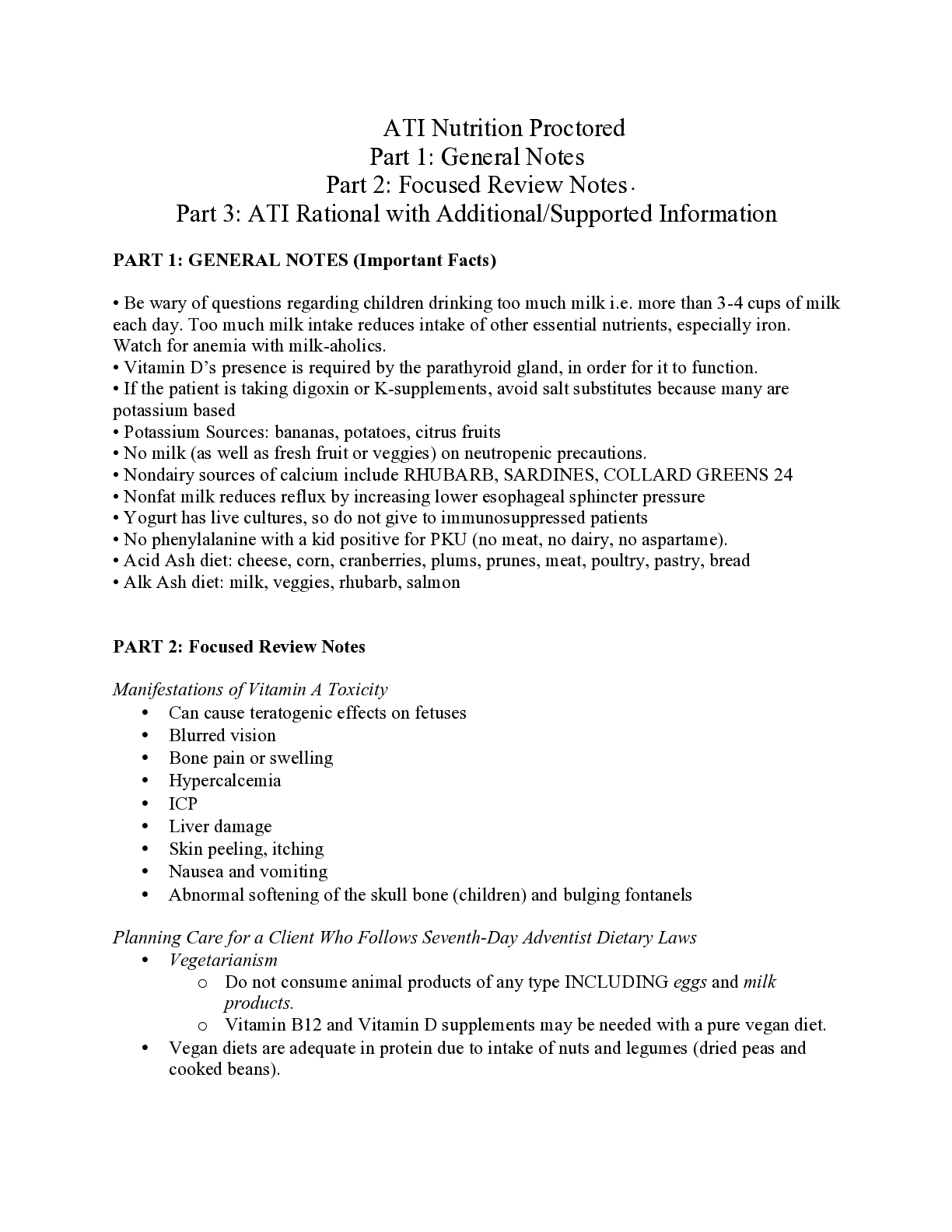*NURSING > QUESTIONS & ANSWERS > Microbiology 33 Final Lecture Exam A & B (GRADED A) Questions and Answers (All)
Microbiology 33 Final Lecture Exam A & B (GRADED A) Questions and Answers
Document Content and Description Below
Microbiology 33 Final Lecture Exam A & B (GRADED A) Questions and Answers El Camino College Compton Educational Center Microbiology 33 Final Lecture Exam A & B By Dr. Eyob Wallano Instruction: Please... use the provided scantron to answer all questions from each section. 5% will be taken off from your total score if any marking is left on the exam booklet. Section E and F will be answered separately on provided paper and submitted with the booklet. Section A. Multiple Choice 1. An epidemic disease is one that A. breaks out in higher than usual proportions in a population. 2. A scientist who studies the patterns of disease in a community and attempts to locate its source is called a(n) B. epidemiologist. 3. What specific job is this person fulfilling? She isolates the cause of an outbreak, prevents its spread, and gets out public health messages to people who could have been exposed. C. Epidemiologist 4. The relationship between the human body and its microbiota D. is an example of a symbiosis. 5. Which of the following would be the reservoir of infection for a zoonosis? D. Animal 6. Which of the following is an example of indigenous microbiota? Indigenous microflora is defined as the community of micro-organisms that live on or in another living organism or in a particular environment. These micro- organisms include bacteria, algae and fungi. A. Escherichia coli in the intestines B. Candida albicans in the intestines C. Lactobacillus in the human vagina D. All of the above are correct 7. Indigenous microbiota may be found in all of the following environments except A. the blood. 8. Which one of the following does not contribute to the virulence of a bacterial species? D. Its ability to grow on artificial laboratory media. 9. Certain microorganisms inhabit parts of the body without causing symptoms of disease. These organisms collectively are referred to as A. indigenous microbiota. 10. The degree to which an organism is able to cause disease is referred to as its B. pathogenicity 11. Pathogenicity islands refer to B. clusters of genes responsible for virulence. 12. Opportunistic organisms are those that C. are usually commensals but can cause disease when body defenses are suppressed. 13. The organisms that infect individuals with AIDS D. are examples of opportunistic organisms 14. Pseudomonas aeruginosa is a soil organism. Every time we eat a fresh salad, we consume millions of these organisms. They usually do us no harm. However, these same organisms can cause serious infection in persons who have been severely burned. Such a pathogen is called C. opportunistic. 15. Pneumocystis pneumonia in an AIDS patient would be considered a(n) D. secondary disease. 16. Such factors as the number of organisms, their generation time and virulence, and the level of host resistance can influence B. the incubation period for a disease. 17. Chronic diseases are those that A. develop rapidly and come to a climax. B. linger for long periods of time. C. occur in epidemic proportions. D. are subclinical. 18. In the prodromal phase of a disease, signs and symptoms A. are at their most severe. B. may include nausea, fever, and headache. C. have begun to disappear. D. have not developed yet and there is no sign of disease. 19. A disease that develops rapidly, shows substantial signs and symptoms, comes to a climax, and then fades, is a(n) A. acute disease. B. prodromal disease. C. systemic disease. D. chronic disease. 20. The period of a disease during which the symptoms subside is often referred to as the A. period of decline. B. period of convalescence. C. prodromal phase. D. climax. 21. Tetanus will not occur in the tissue of the small intestine because A. the organisms will grow, but do not produce toxins in this area. B. the body's white blood cells are particularly active. C. lymph does not flow through the intestine. D. the portal of entry for the tetanus spores was incorrect. 22. Adhesins may be associated with all of the following bacterial structures except A. pili. B. flagella. C. capsules. D. cilia. 23. Invasiveness refers to the ability of a parasite to A. enter through a variety of portals of entry. B. add to its virulence by transduction. C. penetrate tissues and cause structural damage. D. convert toxins to toxoids. 24. The organisms that cause botulism and tetanus both cause disease by the production of A. spores. B. coagulase. C. exotoxins. D. anaerobic growth. 25. An important effect of hemolysins is A. destruction of phagocytes in the blood. B. endotoxin shock. C. release of iron that the pathogen needs for its metabolism. D. lysis of neutrophils and lymphocytes. 26. Which one of the following does not apply to endotoxins? A. They are composed exclusively of protein. B. They are part of the bacterial cell wall. C. They are present in gram-negative bacteria. D. Endotoxins do not stimulate an immune response that leads to the production of antibodies. 27. Hyaluronidase is a bacterial enzyme that A. induces blood clot formation in the host. B. encourages movement in the organism. C. enhances penetration through the host tissues. D. destroys blood clots. 28. Leukocidin is a bacterial enzyme that can A. enhance tissue penetration. B. destroy phagocytes. C. destroy blood clots. D. clot blood. 29. The ability of the body to restrict the spread of a bacterial infection might be overcome if A. exotoxins are produced by the organism. B. the portal of entry of infectious organisms is incorrect. C. the organism produces streptokinase. D. hemolysin is liberated in the environment. 30. [Show More]
Last updated: 2 years ago
Preview 1 out of 23 pages
.png)
Buy this document to get the full access instantly
Instant Download Access after purchase
Buy NowInstant download
We Accept:

Reviews( 0 )
$14.00
Can't find what you want? Try our AI powered Search
Document information
Connected school, study & course
About the document
Uploaded On
Aug 25, 2022
Number of pages
23
Written in
Additional information
This document has been written for:
Uploaded
Aug 25, 2022
Downloads
0
Views
337

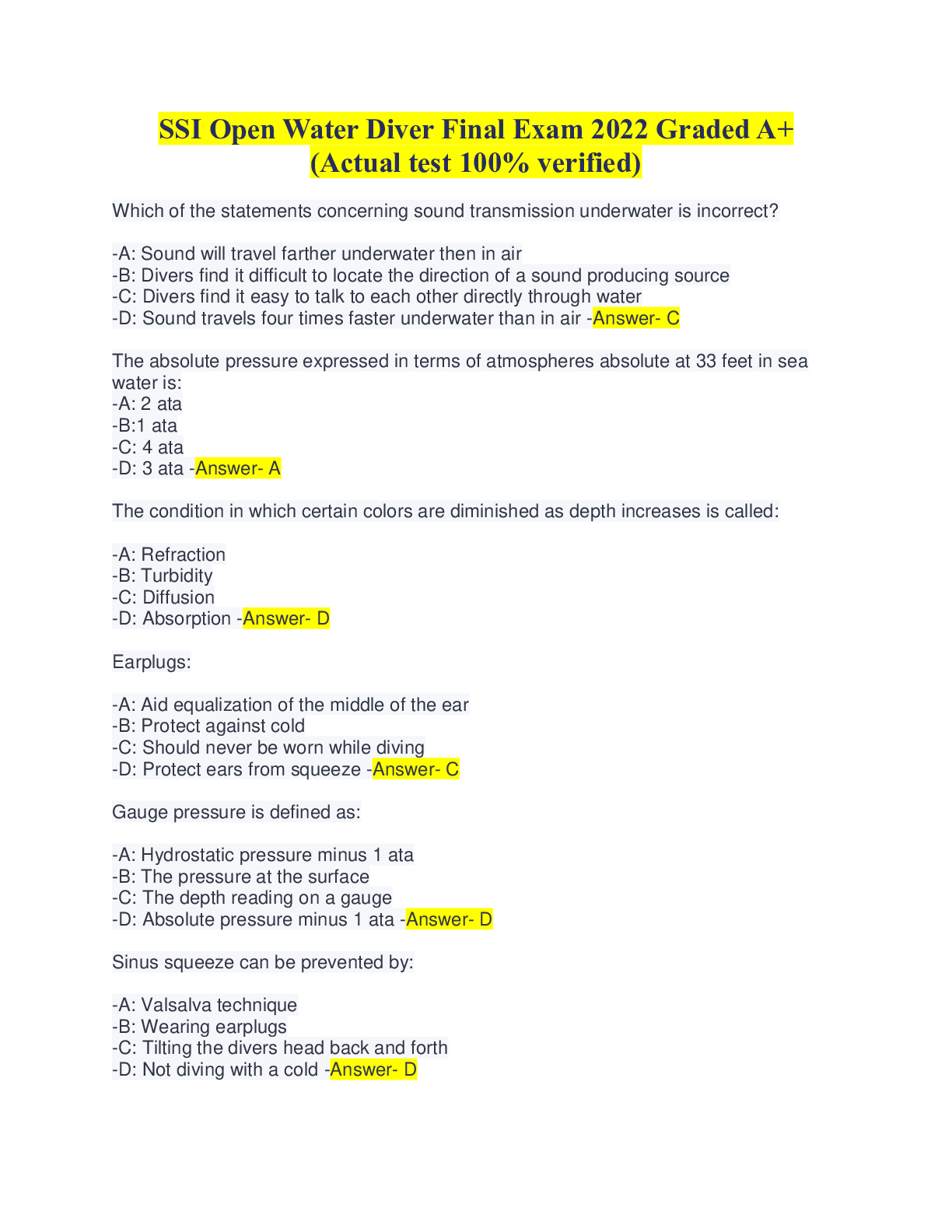

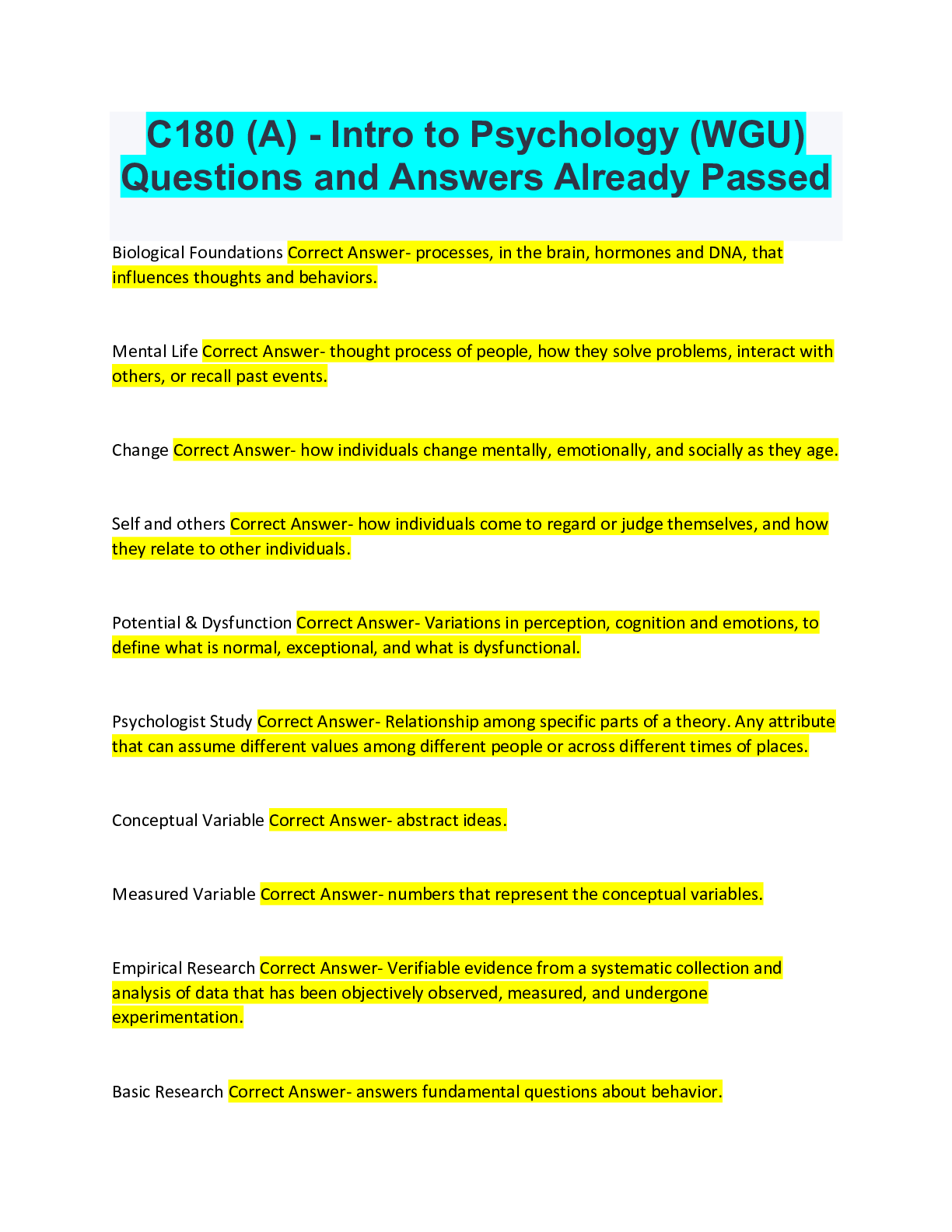


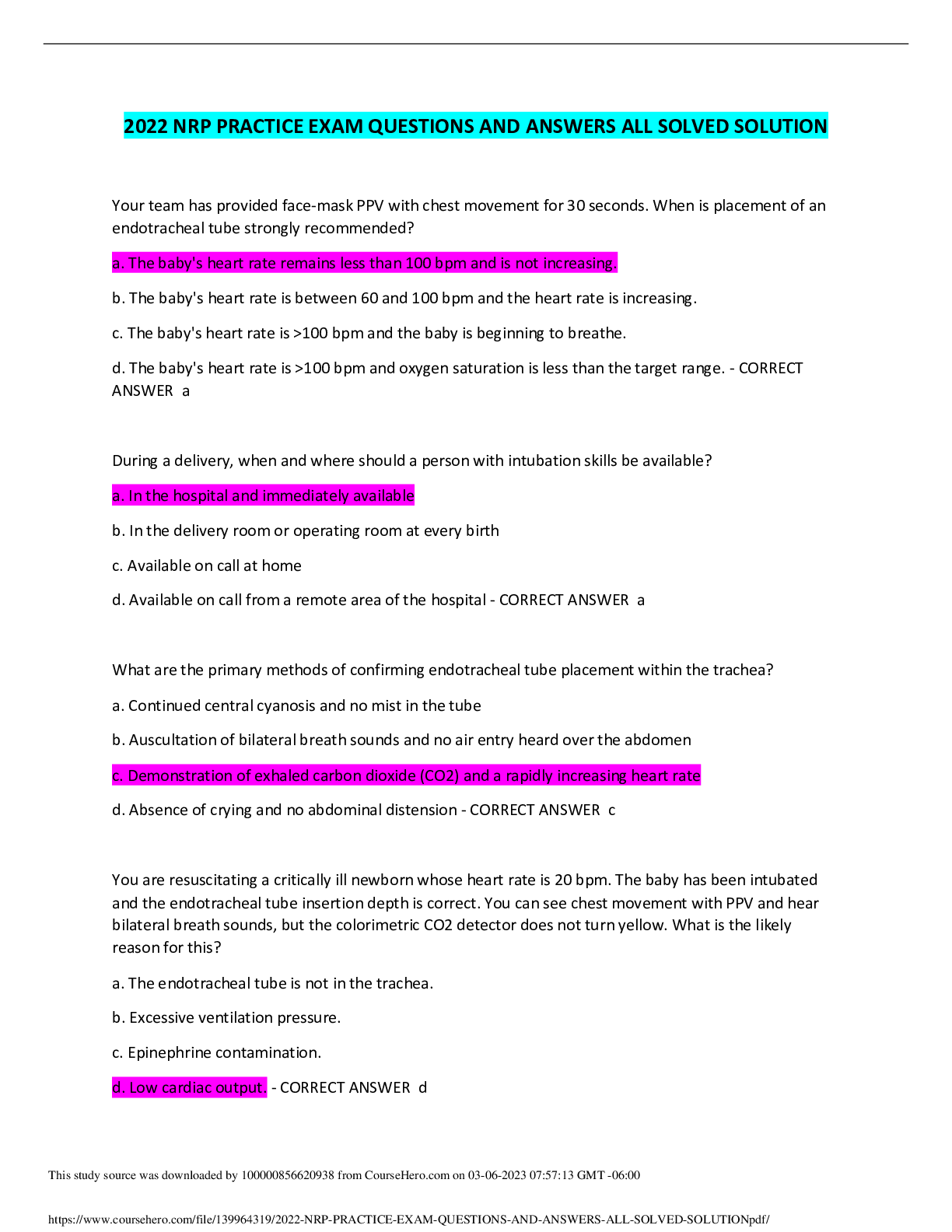
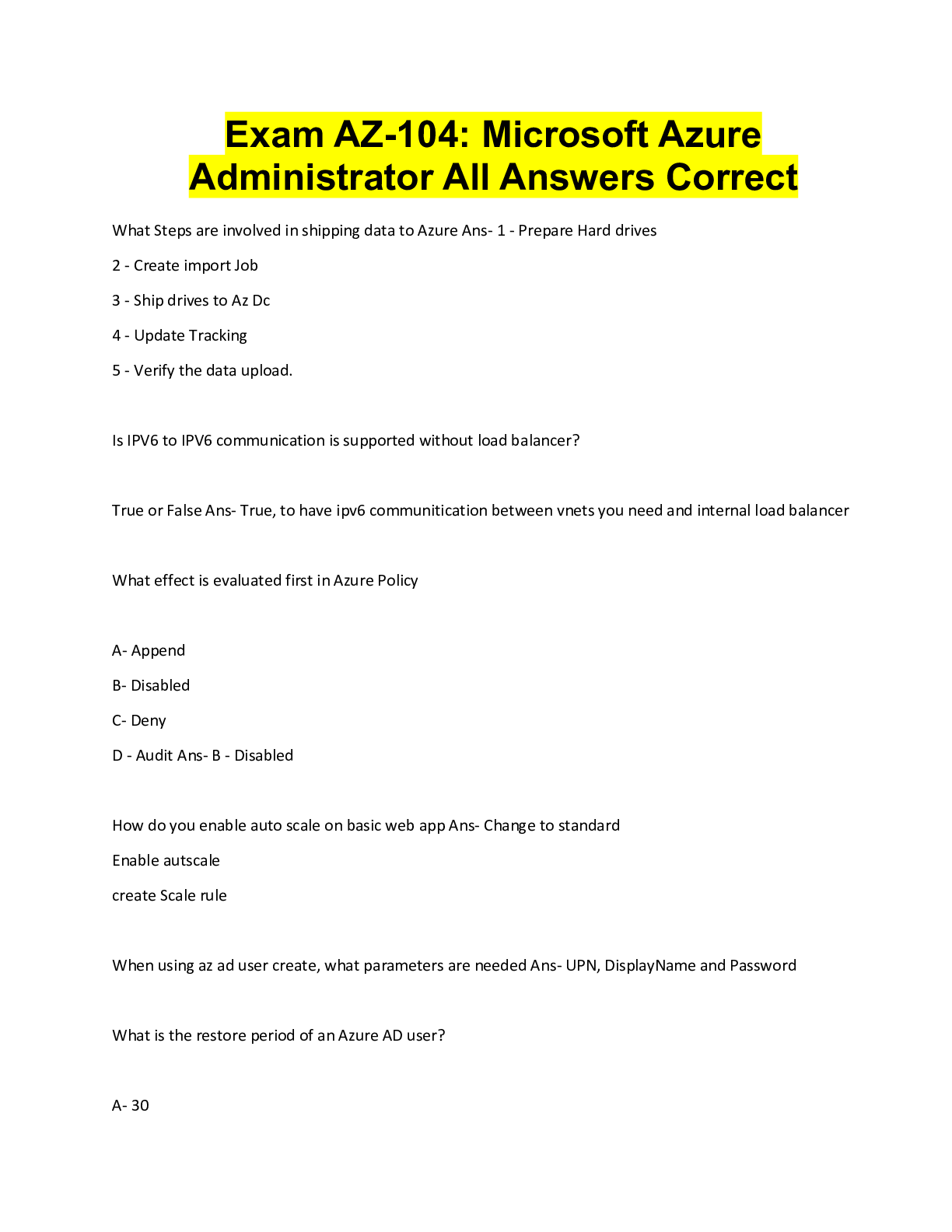
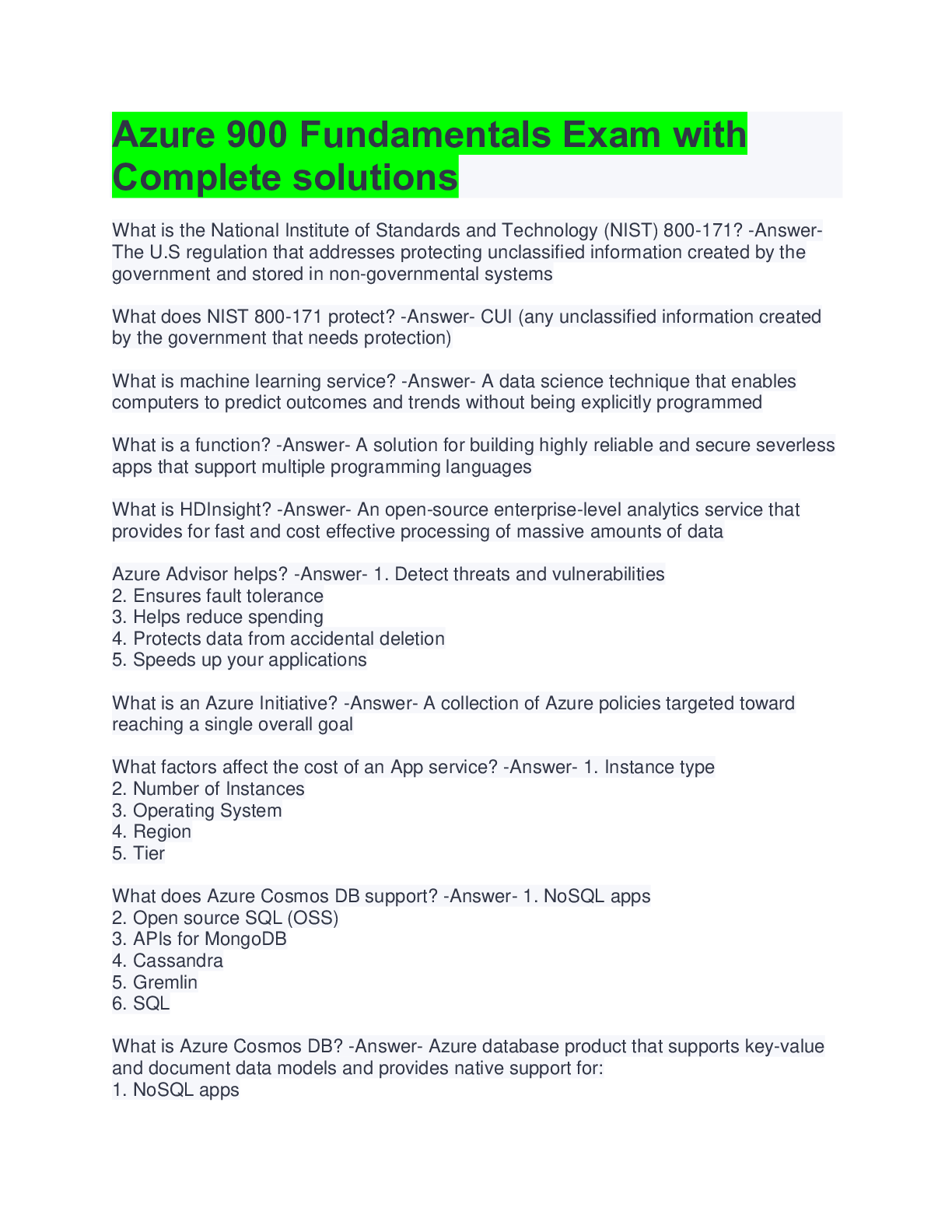
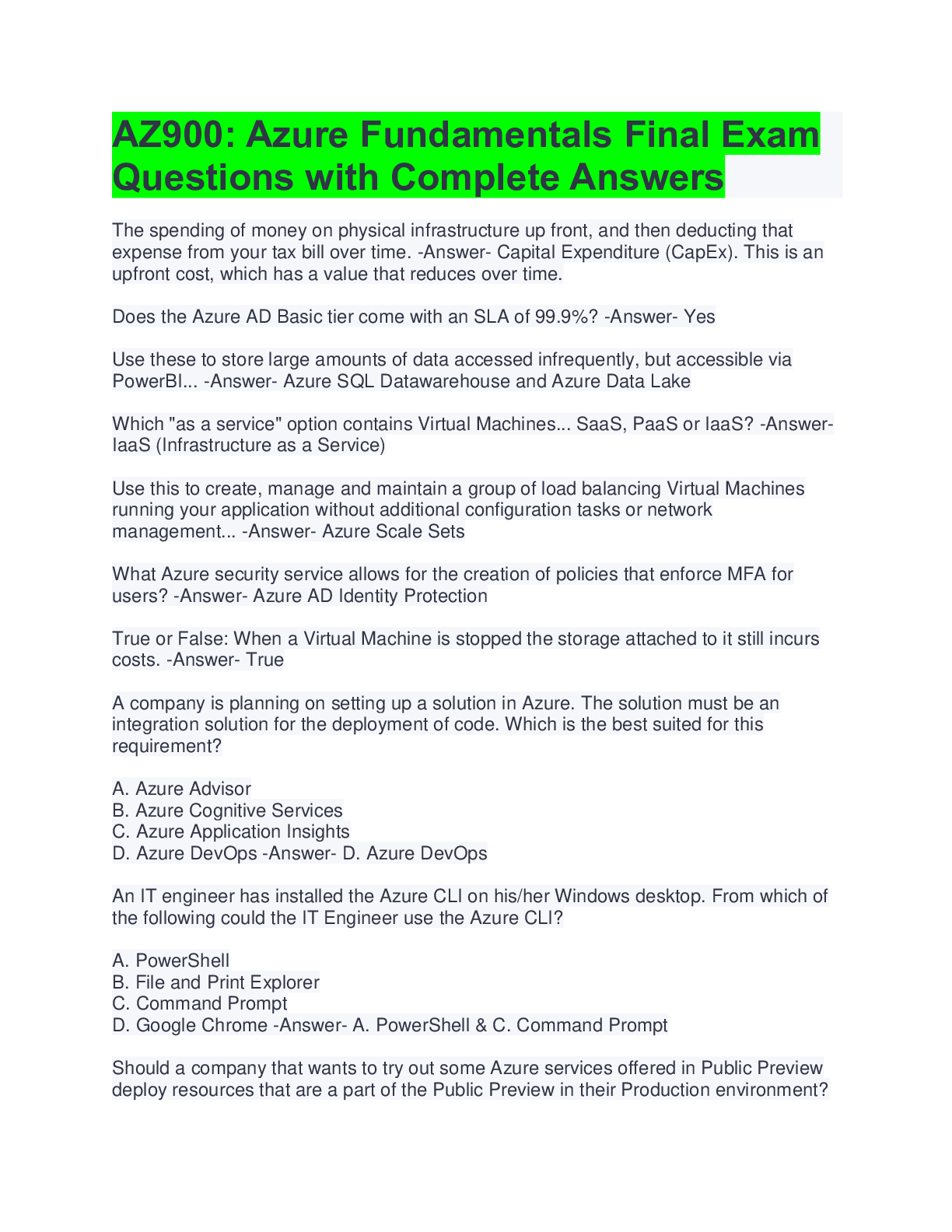

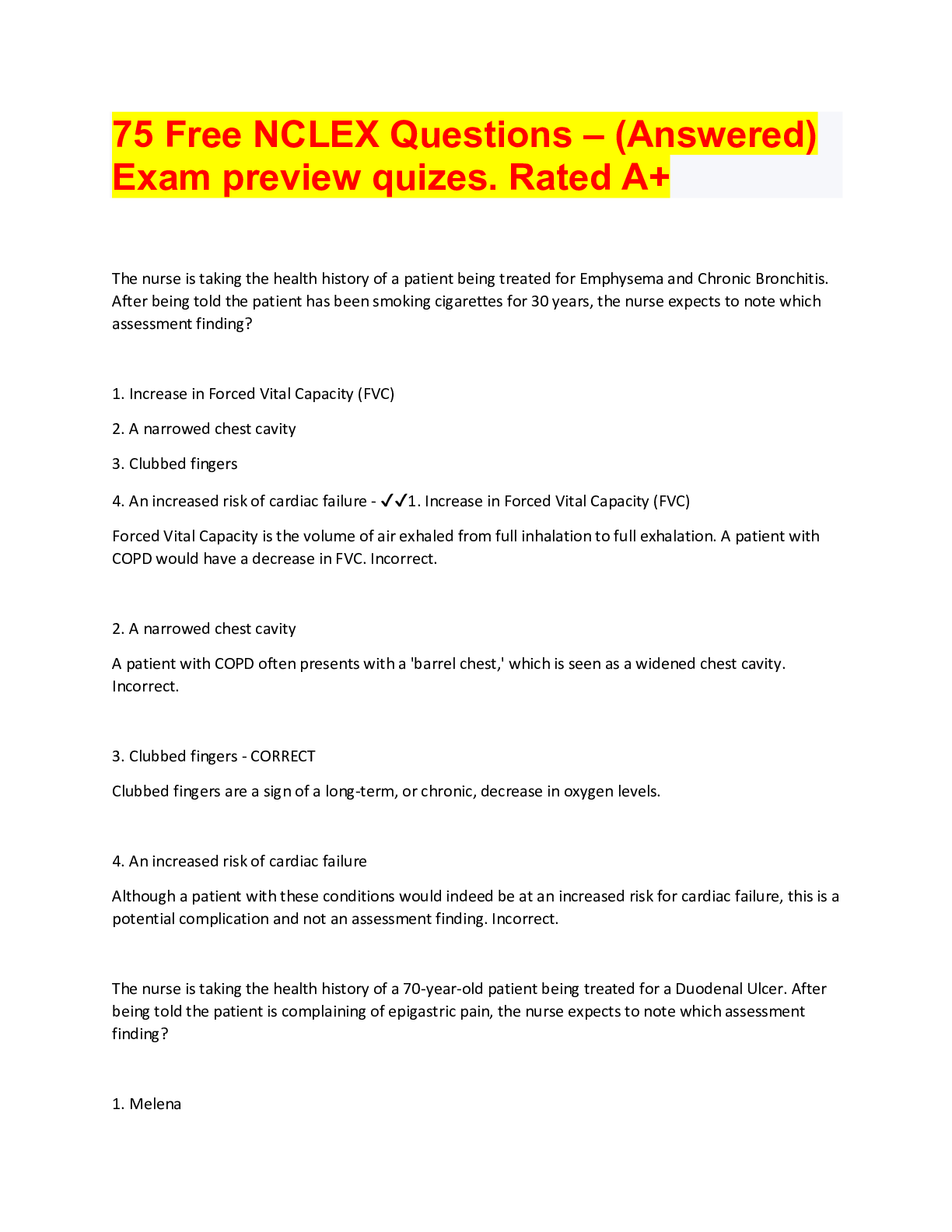




 (1).png)

